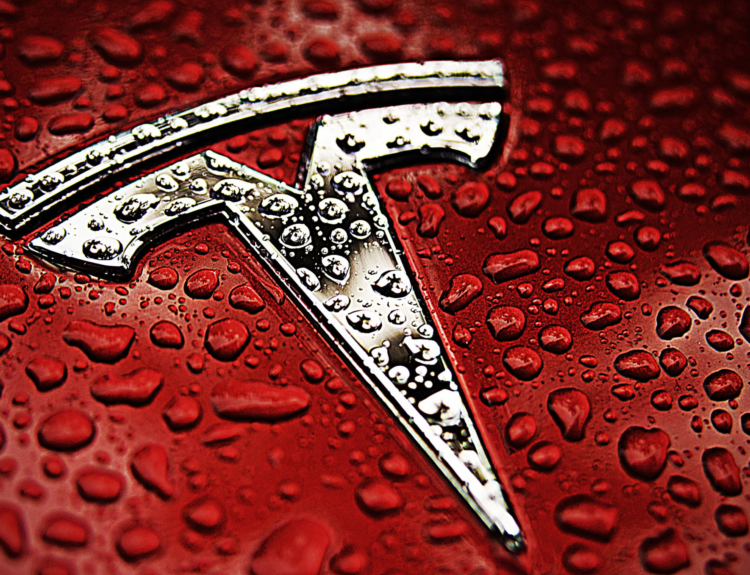Artificial intelligence (AI) has become a cornerstone of modern innovation, transforming industries such as healthcare, transportation, and urban planning with its ability to process vast datasets and perform complex tasks. Yet, this technological marvel comes with a significant caveat: an insatiable demand for energy. According to a recent report by the International Energy Agency (IEA), energy consumption by AI data centers is projected to quadruple by 2030, signaling a seismic shift in global energy dynamics. This forecast, highlighted in a Guardian article published on April 10, 2025, underscores the dual nature of AI as both a revolutionary tool and a potential environmental challenge.
The implications of this energy surge are far-reaching, touching on sustainability, resource allocation, and societal responsibility. As AI continues to permeate our lives, understanding its energy footprint—and finding ways to mitigate it—becomes paramount. This article explores the scale of AI’s energy demands, the environmental concerns they raise, the potential benefits AI could offer in addressing these issues, the critical role of government policy in shaping a sustainable future, and answers to frequently asked questions about this pressing topic.
The Scale of AI’s Energy Demand: A Global Perspective
A Staggering Projection
The IEA’s report provides a sobering statistic: by 2030, the energy consumed by AI data centers worldwide could rival Japan’s current annual electricity usage. Japan, a nation of over 125 million people, consumes roughly 1,000 terawatt-hours (TWh) of electricity each year to power homes, factories, and infrastructure, according to the U.S. Energy Information Administration (EIA). That AI data centers could approach this level of consumption within a decade illustrates the sheer magnitude of the energy challenge ahead.
In the United States, the picture is equally striking. The Guardian notes that by 2030, the energy required to process data—primarily for AI—will exceed the combined consumption of energy-intensive industries like steel, cement, and chemicals. These sectors currently account for about 32% of U.S. energy use, per the EIA. If AI surpasses this benchmark, it could become the nation’s single largest energy consumer, reshaping energy priorities and infrastructure needs.
Globally, data centers currently represent 1-2% of total electricity demand, but the IEA predicts this could rise to 4-5% by 2030, with AI as the primary driver. This doubling of demand reflects not only the proliferation of AI applications but also the increasing computational complexity of AI models.
The Energy Footprint of a Single Data Center
To grasp the scale of this issue, consider the energy needs of individual data centers. A typical large-scale facility consumes 20 to 50 megawatts (MW) of power—enough to sustain a small city. However, the next generation of AI-driven data centers is pushing these figures much higher. For example, a facility under construction in Nevada boasts a planned capacity of 200 MW, sufficient to power approximately 150,000 households, according to estimates from the U.S. Department of Energy. Some upcoming projects are even more ambitious, with energy requirements reaching up to 1,000 MW—20 times the consumption of today’s average data center.
This escalation is driven by the computational intensity of AI workloads. Training a single large language model, such as OpenAI’s GPT-3, can consume as much energy as 126 Danish households use in a year—around 1,200 megawatt-hours (MWh)—according to a study in Nature. As models grow larger and more sophisticated, their energy demands are expected to rise exponentially, fueled by the need for massive server clusters and continuous operation.
A Case Study: Hyperscale Data Centers
Hyperscale data centers, operated by tech giants like Google, Amazon, and Microsoft, exemplify this trend. These facilities, designed to handle vast AI workloads, can span hundreds of thousands of square feet and house tens of thousands of servers. A 2022 report from Synergy Research Group estimated that hyperscale data centers already account for over 50% of global data center capacity, a figure likely to grow as AI adoption accelerates. The energy demands of these centers are not only a technical challenge but also a logistical one, requiring upgrades to power grids and new strategies for energy sourcing.
Environmental Concerns: Beyond Electricity
The Carbon Conundrum
The environmental stakes of AI’s energy surge are high. The IEA warns that only about half of the increased demand from AI data centers by 2030 is expected to be met by renewable energy sources, according to its Net Zero by 2050 roadmap. This leaves a substantial portion reliant on fossil fuels like coal, natural gas, and oil, which emit greenhouse gases and exacerbate climate change. In 2018, U.S. data centers alone emitted 100 million metric tons of carbon dioxide, equivalent to the annual emissions of 21 million cars, per the Lawrence Berkeley National Laboratory. A quadrupling of demand could push this figure into the hundreds of millions of tons if renewable energy adoption lags.
This reliance on non-renewables threatens to undo efficiency gains made in advanced economies over recent decades. For instance, the shift toward energy-efficient appliances and industrial processes could be offset by AI’s voracious appetite, potentially locking regions into fossil fuel dependency for years to come.
Water: The Hidden Resource Strain
Beyond electricity, AI data centers pose another environmental challenge: water usage. Cooling the powerful servers that drive AI computations often requires vast amounts of fresh water. The Guardian’s investigation reveals that a single data center can consume up to 3 million gallons daily—equivalent to the water needs of a city of 30,000 people, according to the U.S. Geological Survey. In water-stressed regions like California or the Middle East, this demand could intensify scarcity, pitting data centers against local communities and agriculture.
For example, in 2021, Google faced backlash in Chile over plans to build a data center in Santiago, a region grappling with a decade-long drought. Critics argued that the facility’s water use would strain an already overburdened system, as reported by Reuters, highlighting the need for sustainable cooling alternatives. Some companies are exploring solutions like seawater cooling or air-based systems, but these technologies are not yet widespread.
A Dual Threat to Sustainability
The combination of energy and water demands creates a dual threat to sustainability. While renewable energy can mitigate carbon emissions, water scarcity remains a pressing issue, particularly in arid climates where many data centers are located for their access to cheap land and power. Addressing this requires a holistic approach that considers both resources in tandem.
The Potential Benefits of AI: A Silver Lining
Optimizing Energy Systems
Despite its challenges, AI offers powerful tools to enhance sustainability. One key area is electricity grid management. Traditional grids, built for centralized fossil fuel plants, struggle with the intermittent nature of renewables like wind and solar. AI can bridge this gap through:
- Predictive Analytics: By analyzing weather data and historical trends, AI can forecast renewable energy output, enabling grid operators to balance supply and demand more effectively, as demonstrated by IBM’s AI-driven grid solutions.
- Demand Response: AI can predict peak usage times and encourage consumers to shift consumption, reducing strain on the grid, per the U.S. Department of Energy.
- Storage Optimization: AI can manage battery systems to store excess renewable energy and release it when needed, smoothing out variability, as seen in Tesla’s AI-powered energy storage.
A practical example is Google’s DeepMind, which reduced cooling energy use in its data centers by 40% using AI-driven optimization, according to DeepMind’s own reporting. Scaled to entire grids, such innovations could significantly boost renewable integration.
Efficiency in Industry and Infrastructure
AI’s ability to analyze vast datasets also unlocks efficiencies in industrial processes and infrastructure:
- Manufacturing: AI can optimize production lines, cutting energy waste. For instance, Siemens uses AI to reduce energy use in its factories by up to 20%.
- Buildings: Smart systems powered by AI can adjust lighting and HVAC based on occupancy, saving energy without sacrificing comfort, as noted by the U.S. Green Building Council.
- Transportation: AI-driven route optimization for logistics fleets can lower fuel use. UPS, for example, saved 10 million gallons of fuel annually through its AI-based ORION system.
Supporting Renewable Energy Adoption
AI can accelerate the shift to renewables by aiding in the discovery and extraction of critical minerals like lithium and cobalt, essential for batteries and solar panels. Mining companies like Rio Tinto are already using AI to identify deposits and streamline operations, reducing environmental impact and energy use, as detailed in their sustainability reports. Additionally, AI can enhance urban planning by designing cities with efficient public transport and traffic systems, reducing reliance on fossil fuel-powered vehicles. Singapore’s use of AI to optimize bus routes offers a glimpse of this potential, cutting travel times and emissions, according to MIT Technology Review.
The Role of Government and Policy: Steering the Course
The Need for Intervention
The IEA report stresses that without government action, AI’s growth could overwhelm energy systems and derail climate goals. Fatih Birol, the IEA’s executive director, notes that AI’s impact depends on “societal, governmental, and corporate decisions,” as quoted in the IEA’s press release. Left unchecked, the technology could deepen reliance on fossil fuels and strain resources.
Policy Solutions
Governments can steer AI toward sustainability through targeted policies:
- Renewable Energy Incentives: Tax credits or subsidies for data centers using renewables could accelerate adoption. Denmark’s wind-powered data centers, supported by government incentives, offer a model, as reported by Bloomberg.
- Efficiency Standards: Mandating low Power Usage Effectiveness (PUE) ratios could drive innovation in data center design, per the U.S. Environmental Protection Agency.
- Strategic Location: Encouraging data centers in regions rich in renewables—like Iceland, with its geothermal energy—could align energy supply with demand, as noted by National Geographic.
- R&D Investment: Funding for energy-efficient AI algorithms and cooling technologies could reduce consumption at the source, supported by initiatives like the U.S. Department of Energy’s AI research programs.
- Transparency Regulations: Requiring companies to report energy and water use could foster accountability, as advocated by the World Resources Institute.
International Cooperation
Given AI’s global reach, international collaboration is vital. Agreements like the Paris Accord could be expanded to address data center emissions, while knowledge-sharing platforms could disseminate best practices across borders.
Expert Perspectives: Optimism vs. Skepticism
A Balanced View
While the IEA sees potential for AI to aid sustainability, not all experts agree. Claude Turmes, a former Green MEP and Luxembourg energy minister, warns that AI’s energy demands could outweigh its benefits without stringent oversight, as cited in Politico. He advocates for proactive government intervention to prevent environmental backsliding.
The Shift Project echoes this caution, projecting that digital technologies could account for 8% of global emissions by 2025. Skeptics question whether renewable capacity can scale fast enough to meet AI’s needs, pointing to supply chain bottlenecks for solar panels and wind turbines, as reported by Forbes.
Ethical Considerations
Beyond technical challenges, AI’s energy use raises ethical questions. Regions with abundant energy may benefit disproportionately, widening global inequities. Addressing this requires policies that ensure fair access to AI’s benefits while minimizing its burdens, a topic explored by the United Nations.
Addressing Top FAQs: AI and Energy Demands
As AI’s energy demands gain attention, readers often have pressing questions. Below are answers to some of the most frequently asked questions, based on the insights from this article and broader research.
1. Why Does AI Use So Much Energy?
AI’s energy consumption stems from its computational intensity. Training large models, like those powering chatbots or image recognition, requires massive server clusters that run 24/7. For instance, training GPT-3 consumed around 1,200 MWh, equivalent to months of continuous processing. The need for cooling these servers further amplifies energy use, making AI far more resource-intensive than traditional computing tasks.
2. How Much Will AI Data Centers Impact My Electricity Bill?
While AI data centers don’t directly bill consumers, their energy demands could indirectly raise costs by straining power grids and increasing overall electricity demand. In the U.S., where AI could surpass industrial energy use by 2030, utilities may need to invest in new infrastructure, potentially passing costs to households. However, AI’s grid optimization capabilities, like those from DeepMind, could offset some of this by improving efficiency.
3. Can Renewable Energy Keep Up with AI’s Growth?
The IEA estimates that only half of AI’s energy demand will be met by renewables by 2030, due to limits in scaling solar, wind, and hydro fast enough. Challenges like mineral shortages for batteries, noted by Forbes, complicate this transition. Yet, AI itself could help by optimizing renewable integration and mineral extraction, as seen with Rio Tinto.
4. What Happens If We Don’t Address AI’s Energy Use?
Unchecked, AI could significantly increase global carbon emissions, potentially rivaling Japan’s 1,000 TWh annual usage. This could undermine climate goals, increase water scarcity in drought-prone areas, and strain energy grids, leading to blackouts or higher fossil fuel reliance. Experts like Claude Turmes warn of this risk, per Politico.
5. Are There Alternatives to Reduce AI’s Energy Footprint?
Yes, options include developing energy-efficient algorithms, using renewable-powered data centers (e.g., Iceland’s geothermal facilities, per National Geographic), and adopting advanced cooling methods like seawater systems. Companies like Google are already exploring these, though widespread adoption remains a challenge.
6. How Can Individuals Help?
While individuals can’t control data center operations, they can support sustainability by choosing energy-efficient devices, advocating for green policies, and reducing unnecessary AI usage (e.g., limiting frivolous AI queries). Supporting companies with transparent energy practices, as suggested by the World Resources Institute, also makes a difference.
Conclusion: A Call to Action
The quadrupling of AI data center energy demands by 2030 is a clarion call for action. It presents a paradox: a technology with the power to solve global challenges could also exacerbate them. The path forward lies in harnessing AI’s potential for good—optimizing grids, boosting efficiency, and supporting renewables—while mitigating its downsides through innovation and policy.
Governments, companies, and societies must collaborate to ensure AI serves as a tool for sustainability, not a burden on it. As Fatih Birol aptly stated, “AI is a tool, potentially an incredibly powerful one, but it is up to us—our societies, governments, and companies—how we use it.” The stakes are high, but with concerted effort, we can shape an AI-driven future that balances progress with planetary health.








